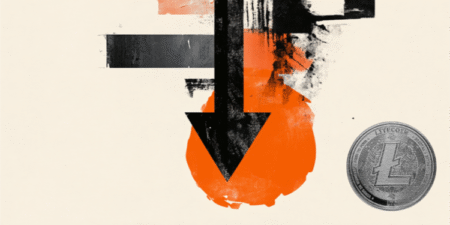- The Indian Rupee weakens against the US Dollar as traders pare Fed dovish bets.
- The delay in the US-India trade deal confirmation has kept the Indian Rupee on tenterhooks.
- US Retail Sales data for June beat estimates, rising by 0.6%.
The Indian Rupee (INR) posts a fresh three-week low against the US Dollar (USD) on Friday. The USD/INR pair jumps to near 86.35, while the US Dollar holds onto gains near its immediate highs.
At the time of writing, the US Dollar Index (DXY), which tracks the Greenback’s value against six major currencies, clings to gains near an over three-week high around 99.00.
The US Dollar trades firmly as traders have pared bets supporting interest rate cuts by the Federal Reserve (Fed) in the September meeting, following signs of accelerating inflationary pressures from the Consumer Price Index (CPI) report for June.
According to the CME FedWatch tool, the probability for the Fed to cut interest rates in the September meeting has reduced to 58% from 70.4% seen a week ago. The tool also shows that the Fed is almost certain to leave interest rates steady in the range of 4.25%-4.50% in the policy meeting later this month.
The US CPI report showed on Wednesday that prices of products that are mainly imported into the economy have risen after the adjustment of sectoral tariffs.
Contrary to market expectations, Fed Governor Christopher Waller continues to argue in favor of reducing interest rates in the July policy meeting, citing downside risks to the economy and labor market. “The Fed should cut interest rates 25 basis points at the July meeting as rising risks to the economy and employment favour easing policy rate,” Waller said. He added that the Fed should not wait until “labour market hits trouble before cutting rates”.
Another reason behind the strength in the US Dollar is the upbeat Retail Sales data for June, in times when market experts anticipated that higher tariffs would have bitten households’ spending power. The Census Bureau reported on Thursday that Retail Sales, a key measure of consumer spending, rose at a faster pace of 0.6% on the month, compared to estimates of 0.1%. In May, the consumer spending measure declined by 0.9%.
Indian Rupee PRICE Today
The table below shows the percentage change of Indian Rupee (INR) against listed major currencies today. Indian Rupee was the weakest against the Australian Dollar.
| USD | EUR | GBP | JPY | CAD | AUD | INR | CHF | |
|---|---|---|---|---|---|---|---|---|
| USD | -0.40% | -0.18% | -0.03% | -0.20% | -0.48% | 0.15% | -0.38% | |
| EUR | 0.40% | 0.24% | 0.36% | 0.20% | -0.08% | 0.59% | 0.03% | |
| GBP | 0.18% | -0.24% | 0.12% | -0.02% | -0.30% | 0.34% | -0.19% | |
| JPY | 0.03% | -0.36% | -0.12% | -0.16% | -0.45% | 0.20% | -0.24% | |
| CAD | 0.20% | -0.20% | 0.02% | 0.16% | -0.30% | 0.37% | -0.17% | |
| AUD | 0.48% | 0.08% | 0.30% | 0.45% | 0.30% | 0.71% | 0.10% | |
| INR | -0.15% | -0.59% | -0.34% | -0.20% | -0.37% | -0.71% | -0.52% | |
| CHF | 0.38% | -0.03% | 0.19% | 0.24% | 0.17% | -0.10% | 0.52% |
The heat map shows percentage changes of major currencies against each other. The base currency is picked from the left column, while the quote currency is picked from the top row. For example, if you pick the Indian Rupee from the left column and move along the horizontal line to the US Dollar, the percentage change displayed in the box will represent INR (base)/USD (quote).
Daily digest market movers: Indian Rupee underperforms its peers
- The Indian Rupee slumps against the US Dollar to around 86.20, while investors await the confirmation of a trade deal between the US and India. US President Donald Trump has expressed confidence a number of times that Washington is very close to striking a trade pact with New Delhi.
- However, the delay in confirmation of a bilateral deal by economies has kept Indian businesses on edge. Indian companies that export a major chunk of their output to the US have been reluctant to pursue their investment plans amid uncertainty surrounding the likely tariff rate.
- On the so-called “Liberation Day” on April 2, US President Trump imposed 26% tariffs on imports from India, which were later paused for 90 days to allow Indian delegates to strike a deal.
- The impact of the trade deal cliffhanger is also visible in Indian equity markets, which have been demonstrating a sluggish performance over the last two months. Nifty50 has traded in almost 5% range since May 12, which had a sharp run of over 13% from April 7. On Friday, the 50-stock basket slumps 0.5% below the psychological level of 25,000, dragged by weakness in banking assets as private lender Axis Bank posted sluggish earnings for Q1FY2025-26.
- So far, the US has closed deals with the United Kingdom (UK), Vietnam, and Indonesia, and a limited pact with China. The economy has announced reciprocal tariffs on 22 nations, notably Japan, the European Union (EU), Canada, Mexico, and South Korea, which are its leading trading partners, as they failed to close a deal during the 90-day tariff pause period.
Technical Analysis: USD/INR bounces back strongly from 20-day EMA
USD/INR advances to near 86.35 on Friday, the highest level seen in three weeks. The pair strengthens after attracting bids near the 20-day Exponential Moving Average (EMA), which trades around 86.00.
The 14-day Relative Strength Index (RSI) approaches 60.00. A fresh bullish momentum would trigger if the RSI breaks above that level.
Looking down, the 50-day EMA near 85.85 will act as key support for the major. On the upside, the June 24 low at 86.42 will be a critical hurdle for the pair.
Read the full article here
















